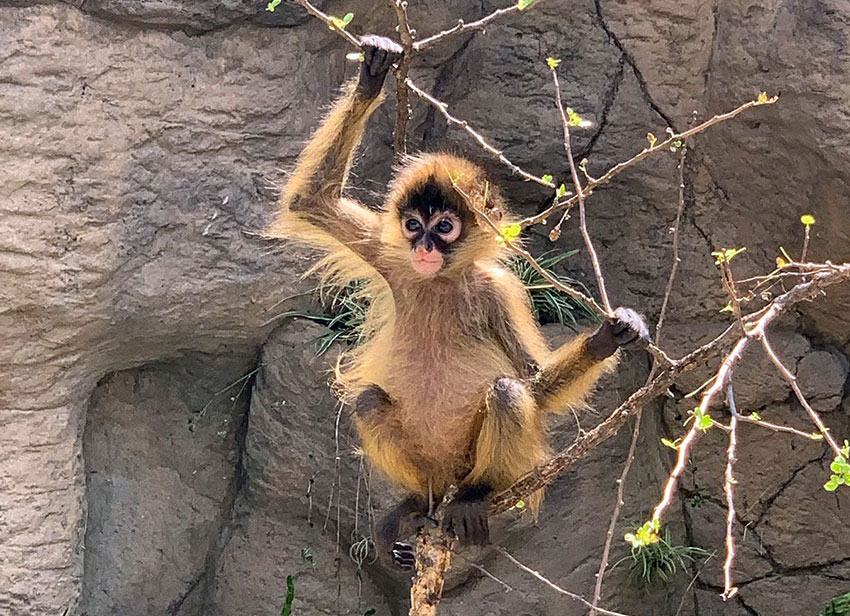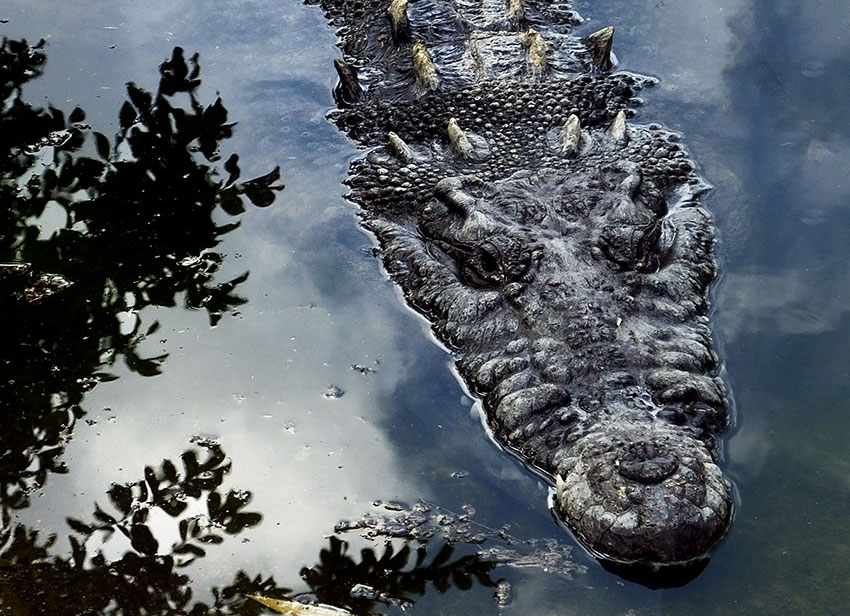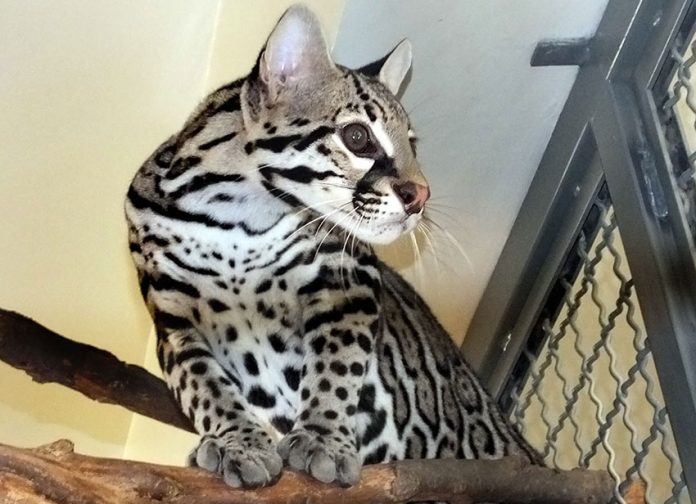Once upon a time, Mexico had a first-rate network of Animal Rescue Centers. The Centros para la Conservación e Investigación de la Vida Silvestre (CIVS) were started in 1988 and over the years they rescued countless thousands of mammals, birds and reptiles. Then, during the presidency of Enrique Peña Nieto, all 11 CIVS centers were unceremoniously shut down.
Wild animals, however, are still turning up in unexpected places and Mexican vets and biologists are scrambling to find temporary shelters for them, as well as the ways and means to return them to their natural habitat, whenever possible.
Guadalajara’s Parque Agua Azul was one of the first organizations to come to the rescue of displaced, misplaced or mistreated wild animals and I described their work in Animal rescue has been dealt a hard blow in Mexico but is bouncing back.
Recently, I was invited to another city park inside Greater Guadalajara, which is collaborating with Agua Azul in these efforts.
Villa Fantasía, located in Zapopan, used to be a zoo but is now dedicated full time to the rescue, rehabilitation and return to the wild of hapless mammals, reptiles and birds which were somehow removed from their natural environment.

Slowly, a network of such organizations is being formed not only in Jalisco, but all over Mexico.
I asked the director of Villa Fantasía, Yamile Lotfe, if her rescue center was an initiative of the government.
“In no way!” she replied. “This project was started by people like my staff and me who have worked with animals all our lives. We began talking among ourselves and then to our directors and they said, ‘OK, if you all want to work together on this, we will support you.’”
Lotfe and friends found that the municipality of Zapopan was open to the idea of turning Villa Fantasía into an animal rescue center. The reason may be because Zapopan is a member of an international coalition of city leaders addressing climate change.
“Zapopan joined the The Global Covenant of Mayors for Climate & Energy, but Guadalajara did not!” says Lotfe. “I think that’s because Guadalajara is focused on reforestation using endemic or native species of plants and trees. So we went to the mayor and his cabinet and explained to them that endemic trees and plants without endemic animals will fail. You need the animals! So this is the project of Villa Fantasía, to create that equilibrium. For example, this is why Zapopan has a program for the reintroduction of honey bees. We are concerned about the whole picture: insects, plants and animals.”
As I toured the grounds at Villa Fantasía, I was introduced to possums and parakeets, false rattlesnakes, a gila monster, a jaguar, a red-tailed hawk with only one wing and a whole gang of howler monkeys.

I also met Pancho the crocodile who, I was told, had grown up in a little pool too shallow for him to swim in. His owner loved Pancho dearly, but eventually the croc grew so big that the woman practically had to climb over him to get across her patio. Reluctantly, she turned Pancho — now 3.8 meters long — over to the biologists at Villa Fantasía who then created a sort of Fantasy Park for the croc, with a deep, wide pool where he can finally swim to his heart’s content.
To photograph Pancho in his new digs, I had my first experience of standing one meter away from a huge crocodile with no fence between us. I’m happy to report that neither of us tried to eat the other!
Another resident of Villa Fantasía whom I met was The Ocelot without a Name.
“Somebody in Zapopan phoned us,” said Lotfe, “claiming they had found a wild animal on the roadside. When we arrived, we discovered it was an ocelot, one of the six big cats found in Mexico. This creature, however, was in perfect condition, with no parasites, so we imagined these people had bought it illegally when it was very small and cute, only to discover this was no kitten, but a really wild animal. So they decided to claim they had found it and to turn it over to us. This took place six months ago. When we got it, it was really small.
“We decided to give it special treatment so it won’t get used to humans. Therefore we stay away from it and we feed it live food, creatures that it will be finding in its normal environment. We plan to liberate it on land we have purchased along the Pacific Coast between Nayarit and Puerto Vallarta. This is a really pristine area where researchers are monitoring animals, birds, reptiles and tarantulas. We’ll be studying this ocelot through a satellite collar over a period of 14 months. We’re initiating this project because in Mexico and especially here in Jalisco, there has never been a proper study of this species of feline.
“In Mexico we have six big cats, but the only one that’s been well studied is the jaguar, because of its role in pre-Hispanic Mexico. The ocelot has not been researched and it’s in danger of extinction, like the puma. So our aim in monitoring it is to follow it around, see if at some point it finds a mate and if so, what sort of place it will choose for its den.
[soliloquy id="123800"]
“We are now waiting for the telemetry collar and then, at the end of September, we expect to liberate it. When we tranquilize it, we’ll put on the collar and we’ll take advantage to do blood samples, ultrasound studies and we’ll also check its heart.
“So it will stay with us for 20 days while it gets used to the collar, which has a special battery that lasts for a year and a half. We have contracted with the manufacturer, Telenax, for 14 months. At that point, the collar will open by itself and fall off. It will then transmit a signal that will hopefully lead us to it. If we can recuperate it, the same collar can be reprogrammed for another animal.”
Lotfe told me the Telenax satellite collar costs 51,000 pesos. To help pay for it, and to finance their research program on the Pacific coast, she and her friends started a private foundation called Garras de Libertad which is dedicated to raising funds for the protection and investigation of wild animals.
“In this world we have three big problems,” Yamile Lotfe told me. “These are drug trafficking, arms trafficking and trafficking in exotic animals. We may not be able to do much about the first two, but I think it’s possible to help those mistreated animals.”
If you agree check out Garras de Libertad.
The writer has lived near Guadalajara, Jalisco, for more than 30 years and is the author of A Guide to West Mexico’s Guachimontones and Surrounding Area and co-author of Outdoors in Western Mexico. More of his writing can be found on his website.
